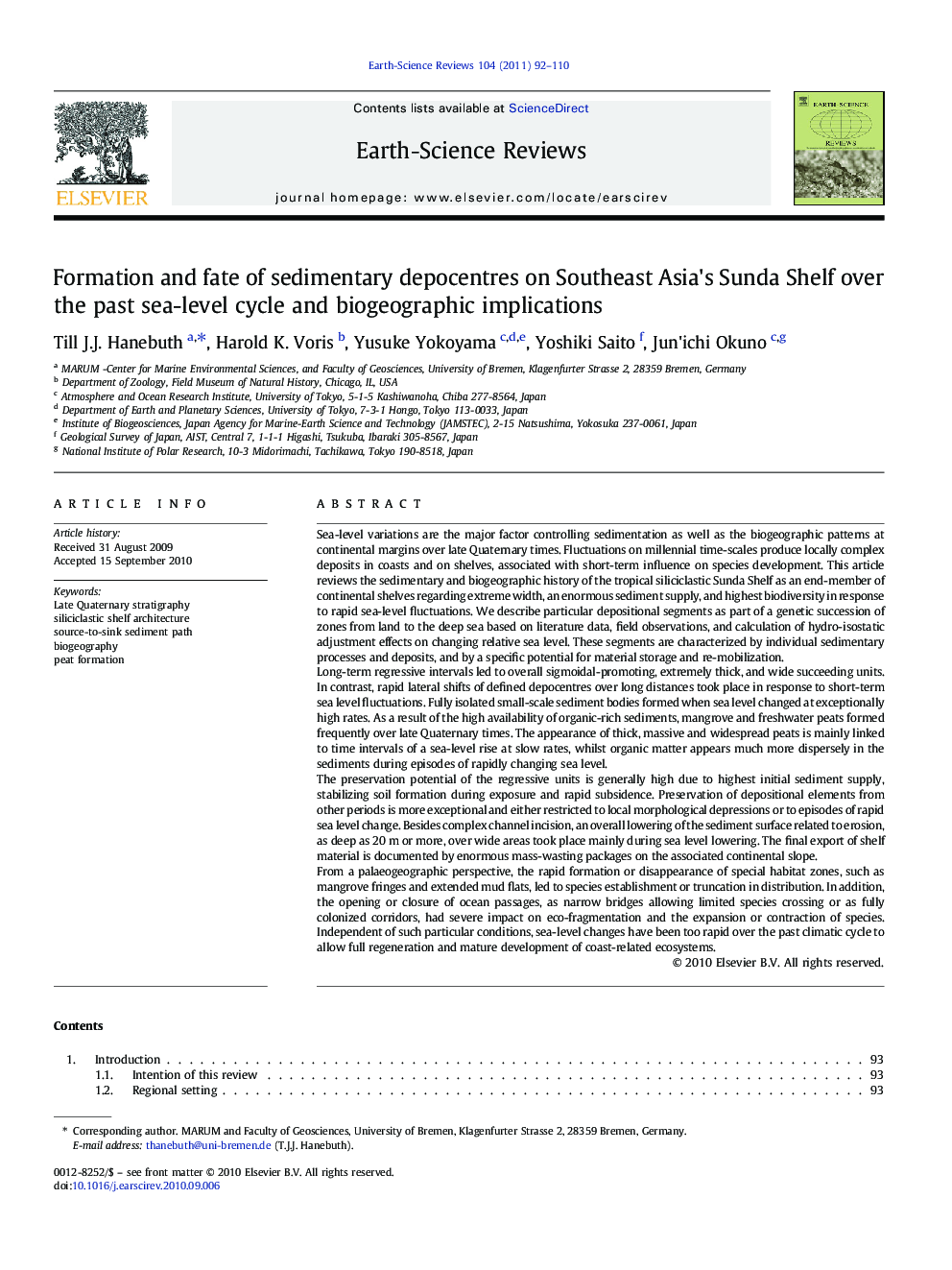| کد مقاله | کد نشریه | سال انتشار | مقاله انگلیسی | نسخه تمام متن |
|---|---|---|---|---|
| 4726210 | 1640007 | 2011 | 19 صفحه PDF | دانلود رایگان |

Sea-level variations are the major factor controlling sedimentation as well as the biogeographic patterns at continental margins over late Quaternary times. Fluctuations on millennial time-scales produce locally complex deposits in coasts and on shelves, associated with short-term influence on species development. This article reviews the sedimentary and biogeographic history of the tropical siliciclastic Sunda Shelf as an end-member of continental shelves regarding extreme width, an enormous sediment supply, and highest biodiversity in response to rapid sea-level fluctuations. We describe particular depositional segments as part of a genetic succession of zones from land to the deep sea based on literature data, field observations, and calculation of hydro-isostatic adjustment effects on changing relative sea level. These segments are characterized by individual sedimentary processes and deposits, and by a specific potential for material storage and re-mobilization.Long-term regressive intervals led to overall sigmoidal-promoting, extremely thick, and wide succeeding units. In contrast, rapid lateral shifts of defined depocentres over long distances took place in response to short-term sea level fluctuations. Fully isolated small-scale sediment bodies formed when sea level changed at exceptionally high rates. As a result of the high availability of organic-rich sediments, mangrove and freshwater peats formed frequently over late Quaternary times. The appearance of thick, massive and widespread peats is mainly linked to time intervals of a sea-level rise at slow rates, whilst organic matter appears much more dispersely in the sediments during episodes of rapidly changing sea level.The preservation potential of the regressive units is generally high due to highest initial sediment supply, stabilizing soil formation during exposure and rapid subsidence. Preservation of depositional elements from other periods is more exceptional and either restricted to local morphological depressions or to episodes of rapid sea level change. Besides complex channel incision, an overall lowering of the sediment surface related to erosion, as deep as 20 m or more, over wide areas took place mainly during sea level lowering. The final export of shelf material is documented by enormous mass-wasting packages on the associated continental slope.From a palaeogeographic perspective, the rapid formation or disappearance of special habitat zones, such as mangrove fringes and extended mud flats, led to species establishment or truncation in distribution. In addition, the opening or closure of ocean passages, as narrow bridges allowing limited species crossing or as fully colonized corridors, had severe impact on eco-fragmentation and the expansion or contraction of species. Independent of such particular conditions, sea-level changes have been too rapid over the past climatic cycle to allow full regeneration and mature development of coast-related ecosystems.
Journal: Earth-Science Reviews - Volume 104, Issues 1–3, January 2011, Pages 92–110